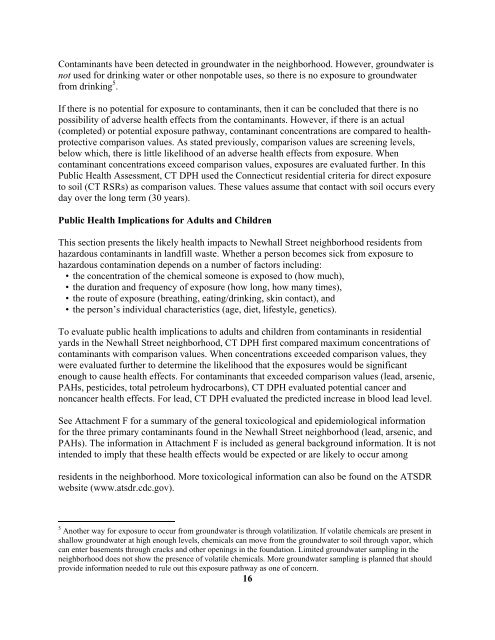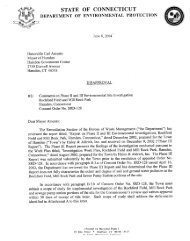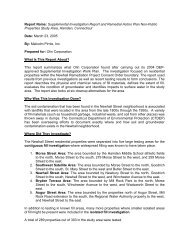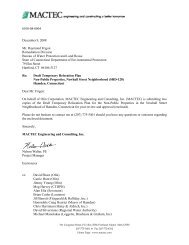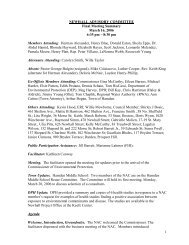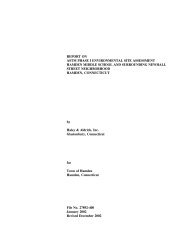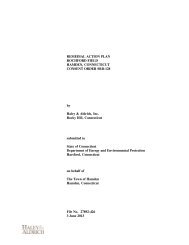Main Report - Newhall Remediation Project
Main Report - Newhall Remediation Project
Main Report - Newhall Remediation Project
- No tags were found...
You also want an ePaper? Increase the reach of your titles
YUMPU automatically turns print PDFs into web optimized ePapers that Google loves.
Contaminants have been detected in groundwater in the neighborhood. However, groundwater isnot used for drinking water or other nonpotable uses, so there is no exposure to groundwaterfrom drinking 5 .If there is no potential for exposure to contaminants, then it can be concluded that there is nopossibility of adverse health effects from the contaminants. However, if there is an actual(completed) or potential exposure pathway, contaminant concentrations are compared to healthprotectivecomparison values. As stated previously, comparison values are screening levels,below which, there is little likelihood of an adverse health effects from exposure. Whencontaminant concentrations exceed comparison values, exposures are evaluated further. In thisPublic Health Assessment, CT DPH used the Connecticut residential criteria for direct exposureto soil (CT RSRs) as comparison values. These values assume that contact with soil occurs everyday over the long term (30 years).Public Health Implications for Adults and ChildrenThis section presents the likely health impacts to <strong>Newhall</strong> Street neighborhood residents fromhazardous contaminants in landfill waste. Whether a person becomes sick from exposure tohazardous contamination depends on a number of factors including:• the concentration of the chemical someone is exposed to (how much),• the duration and frequency of exposure (how long, how many times),• the route of exposure (breathing, eating/drinking, skin contact), and• the person’s individual characteristics (age, diet, lifestyle, genetics).To evaluate public health implications to adults and children from contaminants in residentialyards in the <strong>Newhall</strong> Street neighborhood, CT DPH first compared maximum concentrations ofcontaminants with comparison values. When concentrations exceeded comparison values, theywere evaluated further to determine the likelihood that the exposures would be significantenough to cause health effects. For contaminants that exceeded comparison values (lead, arsenic,PAHs, pesticides, total petroleum hydrocarbons), CT DPH evaluated potential cancer andnoncancer health effects. For lead, CT DPH evaluated the predicted increase in blood lead level.See Attachment F for a summary of the general toxicological and epidemiological informationfor the three primary contaminants found in the <strong>Newhall</strong> Street neighborhood (lead, arsenic, andPAHs). The information in Attachment F is included as general background information. It is notintended to imply that these health effects would be expected or are likely to occur amongresidents in the neighborhood. More toxicological information can also be found on the ATSDRwebsite (www.atsdr.cdc.gov).5 Another way for exposure to occur from groundwater is through volatilization. If volatile chemicals are present inshallow groundwater at high enough levels, chemicals can move from the groundwater to soil through vapor, whichcan enter basements through cracks and other openings in the foundation. Limited groundwater sampling in theneighborhood does not show the presence of volatile chemicals. More groundwater sampling is planned that shouldprovide information needed to rule out this exposure pathway as one of concern.16


